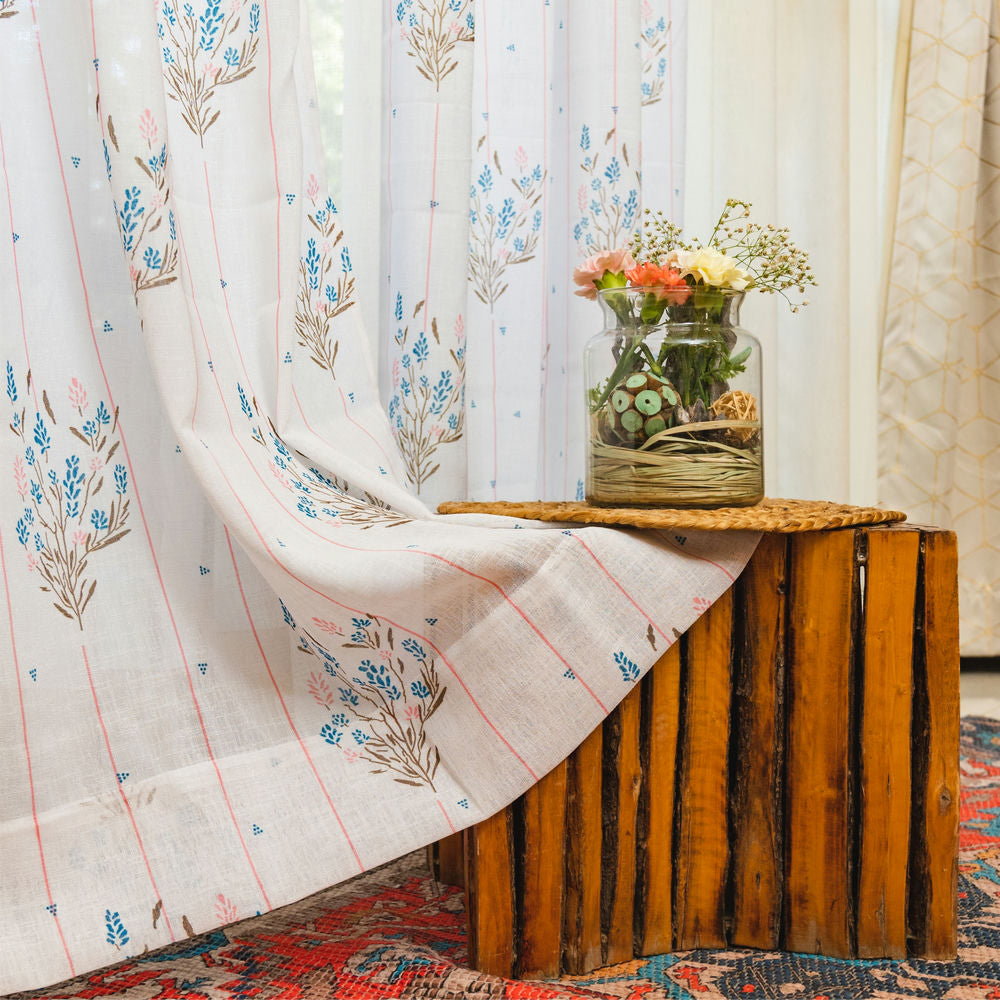Type of Curtains for Office Windows

When selecting window curtains for an office, it's essential to consider both functionality and aesthetics. Here are several types of curtains commonly used in office settings:
- Vertical Blinds: These are a classic choice for office windows. They offer privacy and light control, and their vertical orientation can make a room appear taller. These are a popular choice for office spaces due to their versatility and ease of operation. They provide excellent light control and privacy when closed, and they can be easily adjusted to regulate the amount of light entering the room.
- Horizontal Blinds: Horizontal blinds have slats that can be tilted up or down to control light and privacy. They are versatile and come in various materials such as wood, faux wood, or aluminum.
- Roller Shades: Roller shades are sleek and practical. They come in various materials and opacities, allowing you to control the amount of light entering the room. They also offer a modern look suitable for many office designs. Roller shades offer a clean, modern look and are available in a variety of materials, including fabric, vinyl, and solar screen. They can be customized to filter or block sunlight while maintaining visibility to the outside.
- Sheer Curtains: Sheer curtains provide privacy while still allowing natural light to filter through. They can soften the look of a space and add a touch of elegance to the office environment. Sheer curtains are lightweight and translucent, allowing natural light to filter into the room while still providing some privacy. They add a soft, airy feel to the space and can be paired with heavier drapes for added insulation and light control.
- Panel Track Blinds: These are similar to vertical blinds but feature wider panels that slide along a track. They offer a contemporary look and are particularly suitable for large windows or sliding doors commonly found in office settings. Panel track blinds consist of large fabric panels that slide along a track, making them ideal for covering large windows or sliding glass doors in office settings. They offer a sleek, contemporary look and can be customized with various fabric options.
- Roman Shades: Roman shades offer a more traditional look compared to roller shades. They fold up neatly when raised and come in various fabrics, allowing you to customize the style to match your office decor. Roman shades provide a more elegant and decorative option for office windows. They are available in a range of fabrics and styles, including flat, hobbled, and waterfall, allowing for customization to match the office decor.
- Curtains with Valances: Adding a valance to curtains can give them a more formal and finished appearance. Valances also provide an opportunity to incorporate color or pattern into the office design.
- Blackout Curtains: In spaces where controlling light is crucial, such as conference rooms or multimedia areas, blackout curtains can be beneficial. They block out light entirely when closed, creating a conducive environment for presentations or audiovisual activities.
- Motorized Curtains: For added convenience and modern flair, consider motorized curtains. These can be controlled remotely or programmed to open and close automatically based on time of day or other factors.
- Pleated Shades: Pleated shades feature crisp, pleated folds of fabric that add texture and dimension to office windows. They come in a range of colors and patterns and can be customized with options such as top-down/bottom-up operation for enhanced privacy and light control.
- Cafe Curtains: Cafe curtains cover only the lower portion of the window, providing privacy while still allowing natural light to enter the room. They are a popular choice for office kitchens or break areas.
When choosing the right curtains for office, consider factors such as the amount of natural light you want to let in, the level of privacy required, the overall aesthetic of the space, and any specific functional needs.
